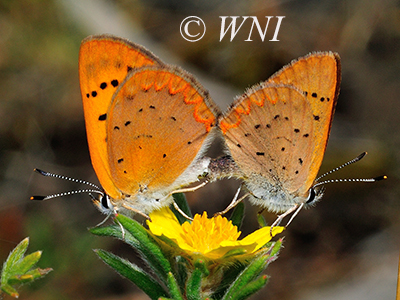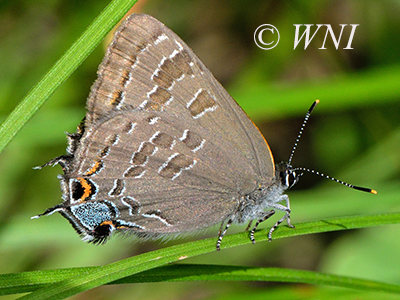| Gossamer-winged Butterflies (Lycaenidae) |
The Lycaenidae is the second-largest family of butterflies, with 4-6 subfamilies, 400-1,000 genera, and over 6,000 species worldwide. The adults are small (usually < 5 cm) and often brightly colored, iridescent blue or red; others are grey or brown. They have banded antennae, reduced forelegs (in males), and thread-like extensions on the hindwings. Adults obtain nutrition from plant nectar, fermenting fruit, carrion, aphid honeydew, and bird droppings. This butterfly family has developed a very complex association with ants (Formicidae), which protect or/and rear the larvae and the pupae of many species (ca. 75%). While some of these relationships are mutualistic, e.g., the caterpillars excrete honeydew which is consumed by the guarding ants, it could also be kleptoparasitic or predatory. Many Lycaenidae caterpillars secrete chemicals that elicit the associated ants to carry the larvae inside the nest where it is fed by the ants or feeds on their larvae. Other larvae feed on buds, flowers, or fruit; the harvester (Miletinae) caterpillars prey on aphids.
| Lycaeninae | ||
 |
Dorcas Copper (Lycaena dorcas) |
|
| Theclinae | ||
 |
Hickory Hairstreak (Satyrium caryaevorus) |
|
| Unauthorized use of our images is NOT permitted. | ||
| Hotlinking or "pinning" of our images to websites is STRICTLY PROHIBITED. | ||
| Copyright © Michael Patrikeev - All Rights Reserved | ||
| |
||





